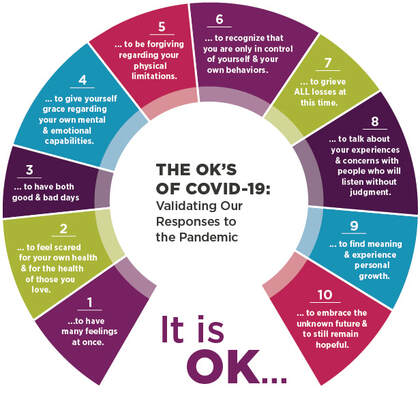|
As nationwide protests against police brutality continue to rock the nation, educators and school staff are preparing to welcome students back for in-person and virtual learning. Many teachers see this as a prime opportunity to help students of all ethnic backgrounds process their feelings by addressing these protests and opening up discussions.
“Teachers cannot be silent during this time,” said Patrick Harris, a 6th and 7th grade English and social studies teacher at the Detroit Achievement Academy. “Teachers have to take a stand. Students are absorbing this and they’re going to ask themselves later on in life or even now, ‘What was my teacher doing during this time?’” Talking with students about these events, as they experience them, is top priority right now. Teachers have to find a way to make meaning of this that creates a better society in the long run. Education Week compiled the following list of resources for teachers, as we embark on a critical school year. Resources about George Floyd’s death and the current protests:
Resources for talking about race, racism and Black Lives Matter:
Starting these classroom conversations can be uncomfortable and challenging. But for black teachers, talking about police brutality and anti-black racism can be particularly emotionally draining. The Practice Freedom Project, founded by Atlanta educator Tamara Pearson, is hosting virtual meditations and reflections for black educators.
0 Comments
COVID-19 has turned the entire world upside down, forcing people of all ages, race, gender and backgrounds to reluctantly adjust to a new and ever-changing "normal", thus creating some confusing, stressful and sometimes frightening situations. Lost jobs, crumbling relationships/divorce, racial tensions, and an economy in a downturn, we’re all feeling some level of trauma.
But are Children Feeling this Trauma too? According to Dr. Adam D. Brown, clinical assistant professor in the Department of Child and Adolescent Psychiatry at NYU Langone and member of its Child Study Center, THEY ARE. Children’s reactions following a traumatic event vary depending on their age, developmental level, degree of social support and coping skills, among other factors. Some show signs and some do not - each child’s response mechanism is completely different. Dr. Brown provided a few typical reactions that young children – ages 10 and under – may exhibit after experiencing trauma.
When Should Caregivers Consider Professional Help for Their Child? If the child’s symptoms do not decrease in two to four weeks after the traumatic event, it may be beneficial to seek out a child or adolescent psychiatrist of psychologist. However, with COVID, this is difficult to assess since it’s ongoing. If you’re unsure, consult with a professional and try to find a provider with knowledge of trauma and evidence-based or evidence-informed treatments for treating traumatic stress. Other situations that may warrant a specialist:
How Can Caregivers Help Their Child Cope?
How Can Caregivers Help Children Manage Their Feelings?
ACE’s website serves as a comprehensive resource hub for those seeking help with trauma. Please visit the Resource section for more information. Specifically, check out this Help Guide discussing trauma in children. Emotions play a critical role in everyday life and affect a majority of the choices we make. Having the ability to express, regulate and understand one’s own emotions, as well as those of others – commonly known as emotional competence or intelligence – is linked to higher social skills and academic achievement. Differences in emotional competence can be observed as early as the toddler years. Some children will throw a temper tantrum when they don’t get the toy they want, while others who have the ability to self-regulate themselves, will not. One of the most common ways children learn about emotions is through those consistently around them. Interactions with surrounding family members, close friends, schoolmates/teachers, and those close in the community allow for valuable opportunities for a child to identify and understand emotions. For those stuck at home during the pandemic, we have compiled a list of books helpful in teaching young children all about complicated feelings that often feel too big to keep inside, from sadness to jealousy to happiness. Although still a fairly abstract concept for young children, supporting children in their early understanding of emotions and allowing them to feel all the feels is the first step in ultimately teaching them how to cope and resolve them as they continue to grow. With the onslaught of negative news streaming through the TVs, car radios, and web pages of Americans across the country, it has become increasingly more difficult, even for the most optimistic, to stay positive and upbeat. Yes, each and every one of us needs to stay informed and take the COVID-19 pandemic seriously – it’s spreading at an alarming rate, causing severe illness, death and crippling the economy. It’s easy to hone in on the negativity, especially when it’s hitting you in all directions.
Such constant negativity can create long-term damaging effects on well-being, which can then trickle into the workplace and your relationships. Seeking out positive elements in your life will give you the energy and resolve to weather the storm. Here are nine things you can change in your day-to-day to stay upbeat:
Additional resources for mental health during a pandemic: |
AuthorWrite something about yourself. No need to be fancy, just an overview. Archives
June 2022
Categories |





 RSS Feed
RSS Feed